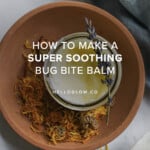Bug bites and stings are an inevitable part of summer. Despite using bug-repelling plants, citronella candles, and swatting away pesky mosquitoes, I can’t seem to avoid those itchy bites! This 100% natural bug bite balm, made with a few simple ingredients, provides soothing relief for redness, itching, and swelling.
And it doesn’t sting like other bug bite remedies, which is a huge bonus. Oh, and—did I mention?—it also smells wonderful!
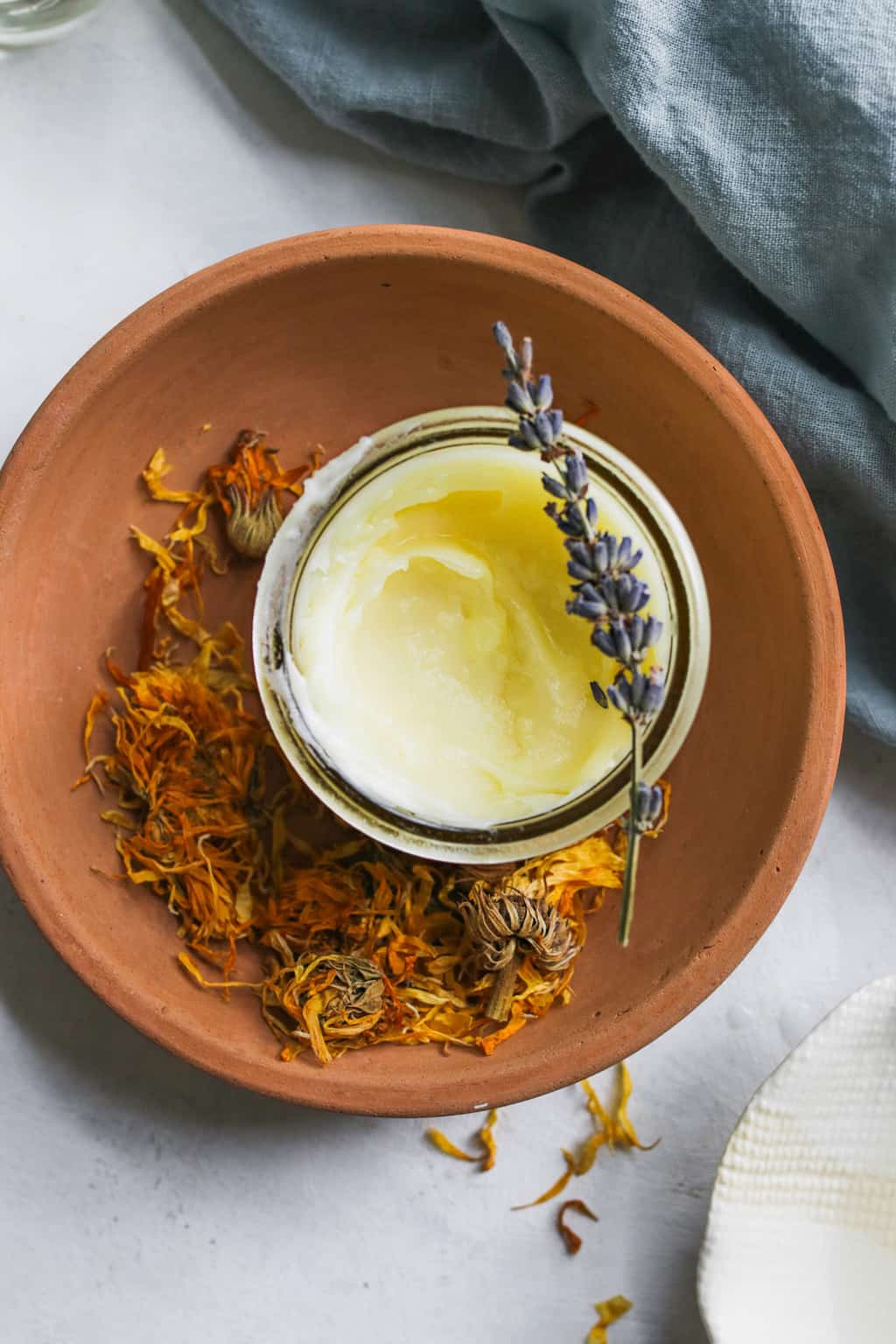
For this balm, I chose ingredients based on how well they take the sting out of bug bites. If you have children (or even if you don’t), you know how impossible it can be to get them to stop scratching! It’s all they want to do!
So it’s important to choose essential oils and butters that have been shown to soothe inflammation, calm the fire, and get rid of the itch.
Jump to:
Ingredients


- Calendula oil–Not only is calendula super soothing,but it’s also a major anti-inflammatory that’s been used for centuries to treat wounds [source] that just won’t seem to heal. If you’re in a hurry,you can buy calendula oil at the store,but we recommend making your own fresh calendula oil for maximum skin-soothing benefits if you have the time.
- Tea tree essential oil–Known for its anti-pain,anti-swelling,and anti-itching qualities,tea tree is also antibacterial and antifungal,so it should help keep those annoying bug bites from getting infected [source].
- Lavender essential oil –Lavender is a powerful anti-inflammatory [source] with soothing pain-relieving effects [source] that quickly take the pain and itch out of bites.
- Beeswax–All-natural beeswax provides healing and moisturizing properties. Plus,it gives this bug bite balm a solid,balmy consistency.
- Shea butter –Often used as a natural body lotion,shea butter contains many types of fatty acids that work as moisturizers,antioxidants,and a high vitamin E content [source].
- Avocado oil –This oil has been shown to promote collagen formation [source],moisturize chapped skin,and reduce age spots. Plus it has a thick,soothing consistency that I love.
See recipe card for quantities.
Instructions
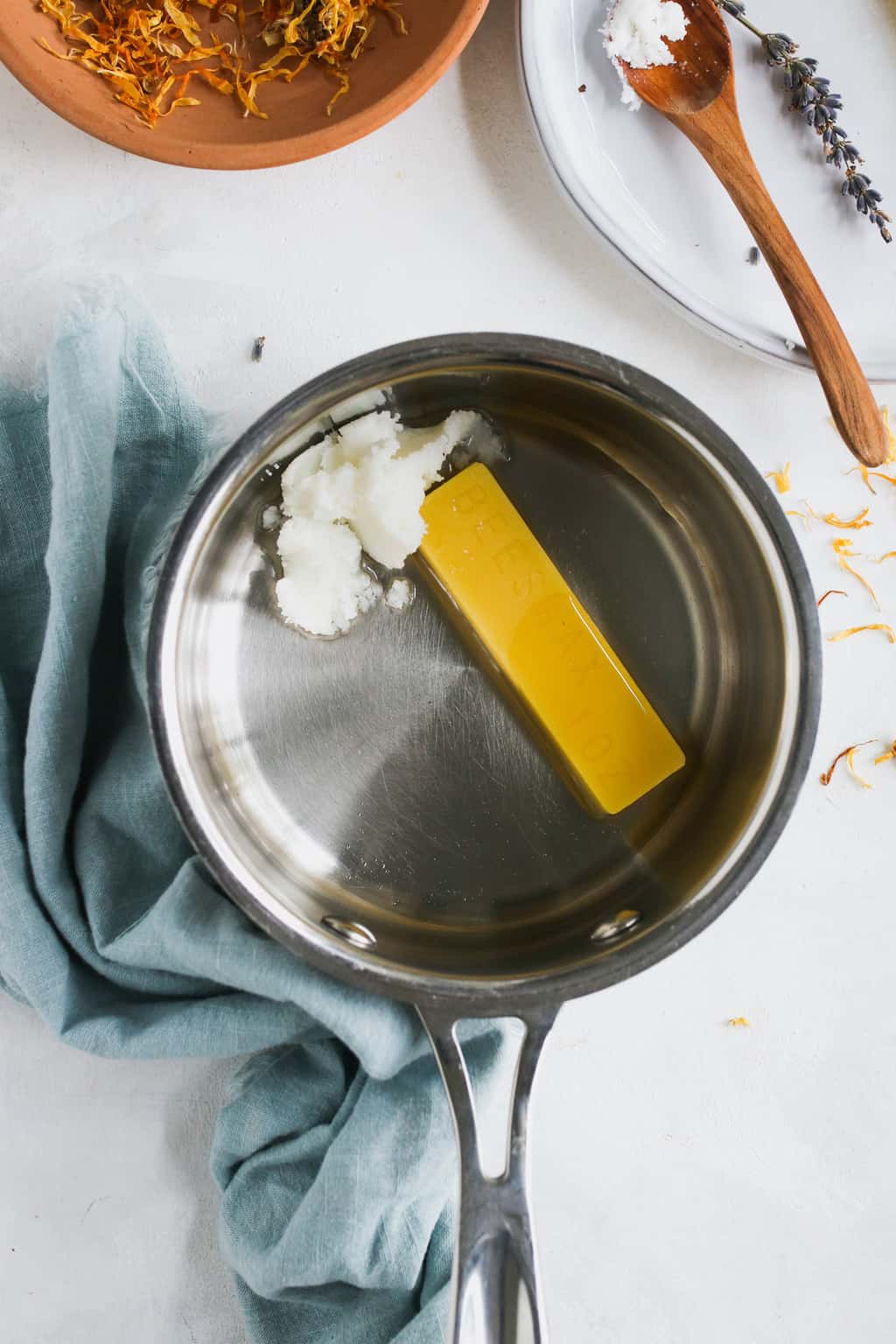

To get started,melt shea butter,avocado oil,and beeswax in a small pan over low heat and stir well.
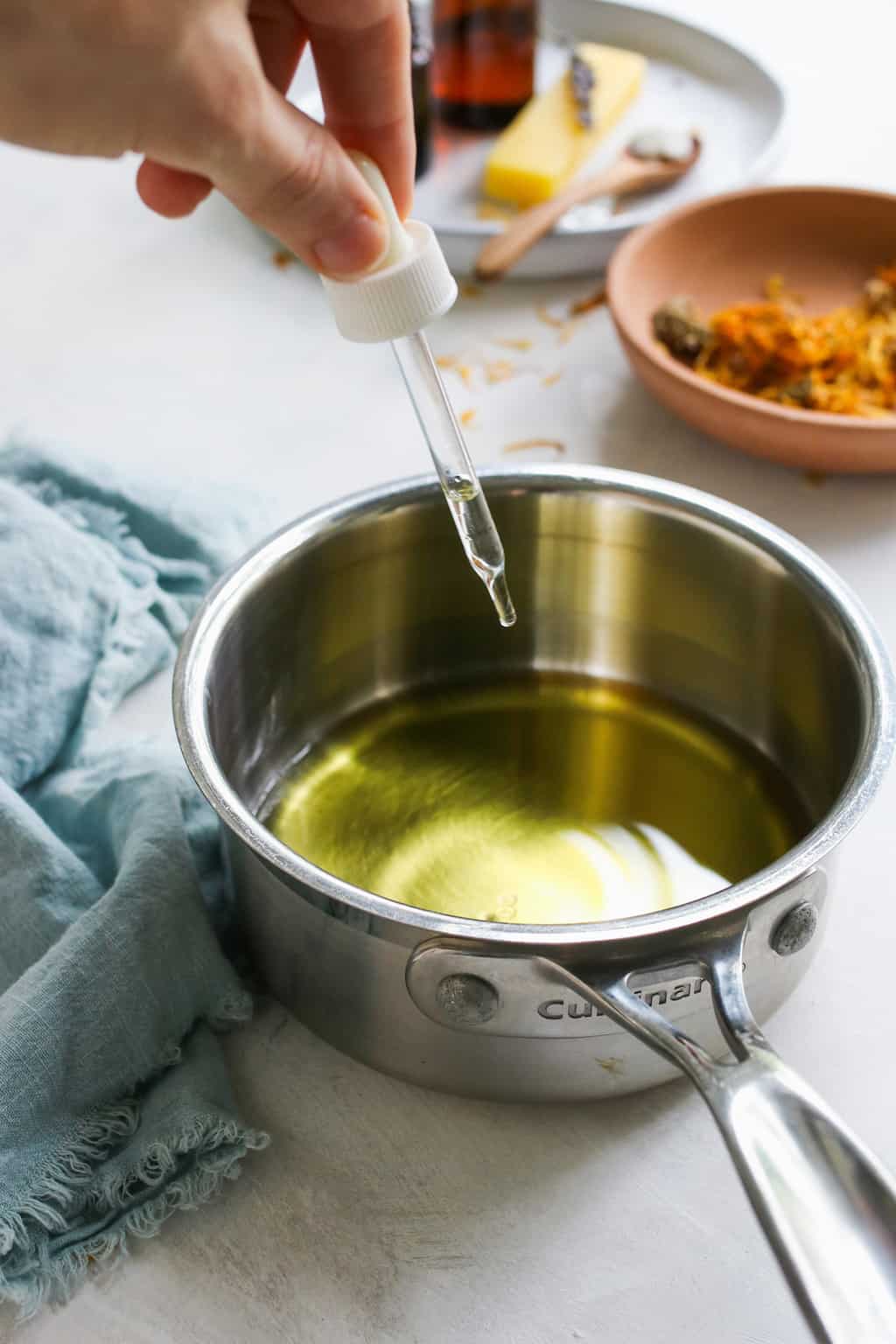

Remove from heat and stir in calendula,lavender,and tea tree oils. It does set quickly once it’s off the heat,so you’ll want to work fast.
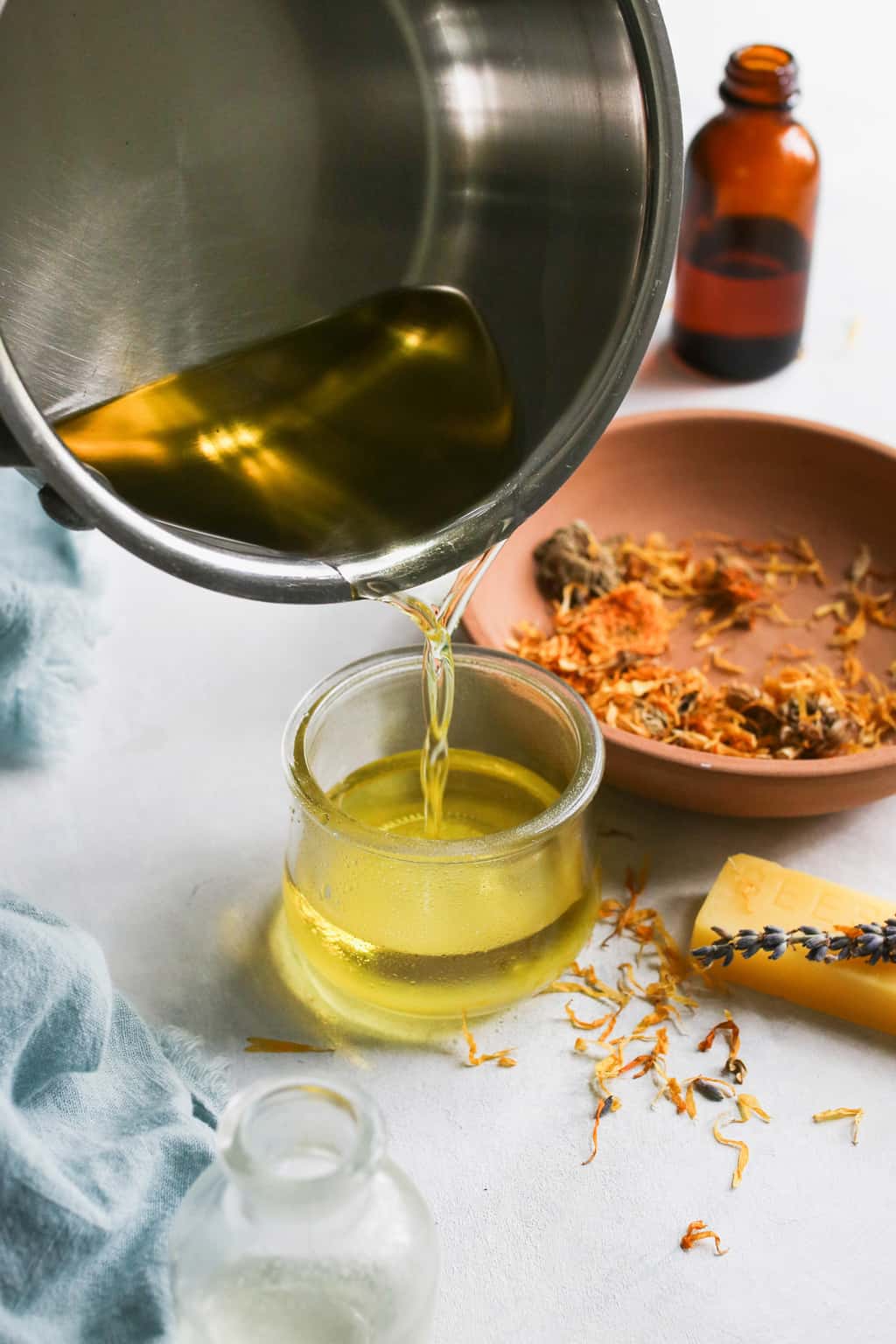

Pour the melted oils into a small glass jar and let cool for several hours or overnight.


It makes about 5 ounces of balm,which should last one person the entire summer. To use,apply directly to bug bites 2–3 times a day,or as often as needed to keep itching at bay.
Hint:This recipe makes a pretty solid bug bite balm that won’t melt in the heat of the summer. If you prefer a softer cream,use half as much beeswax.
Substitutions
This recipe is pretty versatile. While the ingredients are tried and tested in my home,they’re not the only ones you can use. It’s pretty hard to mess this up,so feel free to test out different combinations of oils until you find something that works for you.
- Lavender essential oil—Chamomile,peppermint,and rose geranium are all soothing essential oils that can help take the itch out of bug bites. See below for a complete list of oils. Just make sure to keep the same number of total drops in the recipe when switching out essential oils.
- Avocado oil—Any neutral carrier oil will work,but you can try olive,coconut,jojoba,or almond oil.
- Beeswax—If you’re vegan or would prefer to use a cheaper alternative,you can use natural candelilla wax in place of beeswax.
Storage
I prefer to use several small jars that are easy to toss in my bag or keep in the medicine cabinet,but your bug bite balm can easily be poured into an empty lip balm tube (like these bug bite sticks) for hands-free application.
This balm should keep for 6-12 months without going bad. If you notice an offsmell,the oils may have gone rancid,in which case you should make a fresh batch.
Best Essential Oils for Bug Bites
Several essential oils are known for their anti-inflammatory properties that can soothe bug bites and provide relief from itching,redness,and irritation.To use,mix 6 drops of oil with a tablespoon of carrier oil and massage into the skin.
1. Lavender:A study conducted in 2015 found that lavender has anti-inflammatory and pain-relieving properties,for one use similar to that of steroids [source],making it a perfect choice for bug bites.
2. Rose geranium:Rose geranium essential oil is another option that is often used to soothe bug bites. It’s known for its pleasant floral scent and potential skin-soothing properties to reduce the redness,swelling,and irritation of bites.
3. Lemongrass:Due to its anti-inflammatory properties [source],lemongrass can help calm the inflammation and discomfort associated with insect bites. Plus,it can help keep bugs from biting in the first place!
4. Camphor:Thanks to its analgesic and anti-inflammatory properties [source],camphor essential oil is ideal for treating even the worst insect bites. Additionally,it also contains insecticidal properties [source],making it beneficial in helping to keep the bugs away to begin with!
5. Chamomile:Both Roman and German chamomile oils have anti-inflammatory properties that can help alleviate itching and irritation caused by bug bites.
6. Tea Tree:Tea tree oil is a fantastic oil to have on hand for any number of skin issues. It’s a gentle yet powerful oil that is frequently used to both prevent bug bites andtreat them after the fact.
7. Rosemary:Rosemary essential oil has potent anti-inflammatory effects [source] that help it to cool redness and irritation quickly.
8. Cypress:Cypress essential oil is used for various skin issues,including irritation. It contains antimicrobial properties [source] that can help support skin health and healing,and it’s also considered to be highly astringent.
9. Peppermint:Peppermint essential oil (and other oils containing menthol) creates a cooling sensation on the skin that helps soothe the burn and itch you often get with bites. Peppermint oil is also antimicrobial [source],which helps reduce the risk of infection associated with some bites.
Variation:Soothing Bug Bite Spray
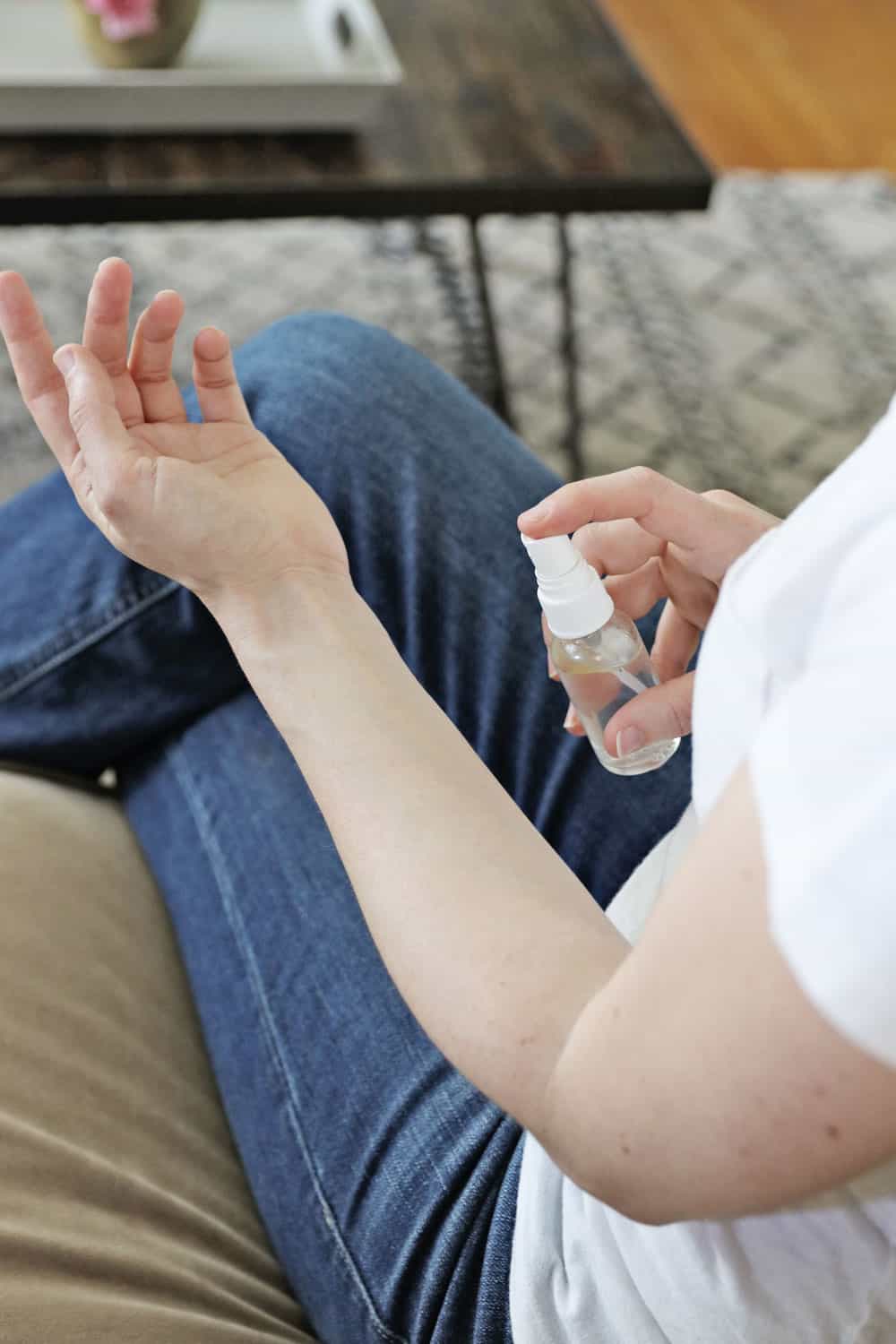

Instead of a balm,you can make a bug bite spray with essential oils that work together to calm inflammation,ease the itch,and keep irritation at bay.
Pour carrier oil into a small spray bottle. Add essential oils,then replace the lid and give it a good shake. Fill the rest of the bottle with rose water.
Spritz 1–2 times directly on bug bites,and gently massage into the skin. Wash your hands when finished.
Variation:All-Natural Bug Spray


Try this simple bug-repelling spray to keep bugs away:
Pour jojoba oil into your spray bottle then add the essential oils. Top with witch hazel and glycerin. Shake very well before using as the ingredients naturally separate.
When applying,you don’t need very much –a few spritzes worked great for each arm and leg. It does need to be reapplied more often than other repellants –every few hours or so.
FAQ
Sure,I don’t see why not! You can also use it to moisturize dry hair or soften parched skin after spending time in the sun.
Yes,peppermint oil is wonderful for soothing itchy,irritated skin. Its scent is incredibly strong,though,so only add 2–3 drops at most.
No,when we say “calendula oil” in this recipe,we’re referring to a carrier oil,such as olive or jojoba,that has been infused with calendula,like the process here.
It’s measured by weight. An ounce of solid beeswax is approximately 2 tablespoons melted.
All-Natural Bug Bite and Sting Balm
Made with 100% natural ingredients to soothe the itch and pain of bug bites and stings.
Yield:5ounces
Cost:$7
Instructions
In a small pan,melt shea butter,avocado oil,and beeswax. Stir well.
Remove from heat and stir in calendula,lavender,and tea tree oils.
Let cool slightly,then pour into small jars or lip balm containers. Let cool completely.
Notes
To use,apply directly to bug bites 2–3 times a day,or as often as needed to keep itching at bay.
This balm should keep for at least a year without going bad. If you notice an offsmell,the oils may have gone rancid,in which case you should make a fresh batch.
This article was medically reviewed by Dr. Gina Jansheski,a licensed,board-certified physician who has more than 20 years of practice experience. Learn more about Hello Glow’s medical reviewers here. As always,this is not personal medical advice,and we recommend that you talk with your doctor.
181


